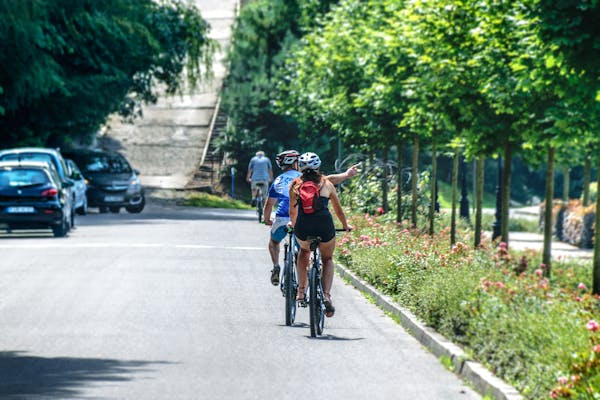Cycling is a low-impact, highly efficient workout that provides numerous benefits to people of all fitness levels. Whether you're looking to boost your cardiovascular health, lose weight, or simply enjoy the great outdoors, cycling is an excellent choice. This comprehensive guide covers everything you need to know to get started with outdoor cycling workouts, including tips on selecting the right bike, gear, and routes.
Choosing the Right Bike
One of the most important decisions you'll make as a cyclist is choosing the right bike. There are several types of bikes to choose from, each with its own unique features and benefits. Here are some of the most popular options:
Road Bikes: These are lightweight, fast bikes designed for smooth roads. They're great for long rides and racing, but not ideal for off-road terrain.
Mountain Bikes: These are sturdier bikes designed for rough terrain and off-road riding. They're ideal for more challenging rides and technical trails.
Hybrid Bikes: These are a combination of road and mountain bikes, offering a mix of speed and stability. They're great for commuting and leisurely rides.
When choosing a bike, consider your skill level, the type of riding you plan to do, and your budget. You may also want to consider factors such as the bike's weight, frame material, and components.
Essential Gear
In addition to a bike, there are several other items you'll need to get started with outdoor cycling workouts. These include:
Helmet: This is a crucial piece of safety gear that protects your head from injury in case of a fall or accident. Make sure to choose a helmet that fits comfortably and meets safety standards.
Gloves: These provide extra grip and cushioning for your hands, reducing fatigue and improving comfort on longer rides.
Cycling Shoes: Specialized cycling shoes have stiff soles that provide increased power transfer and efficiency. They also have cleats that clip into the pedals for added security.
Bike Shorts: These shorts are designed to wick away sweat, reduce chafing, and provide added comfort on longer rides.
Planning Your Route
Once you have your bike and gear, it's time to start planning your rides. Consider the following factors when choosing a route:
Distance: Consider the length of the ride, taking into account your skill level and fitness goals.
Terrain: Consider the type of terrain, whether it's flat or hilly, and choose a route that matches your skill level and preferences.
Safety: Choose a route that is well-lit and has minimal traffic, especially if you'll be riding in the dark or in busy areas.
There are several online resources and apps available to help you plan your route, such as Strava, Google Maps, and Bikely.
Workouts for All Levels
Whether you're a beginner or an experienced cyclist, there are several outdoor cycling workouts that you can try to improve your fitness and have fun. Here are some workout suggestions for all levels:
Beginner: Start with a leisurely ride, focusing on building up your stamina and endurance. Aim to ride for 30-60 minutes, and gradually increase the distance and intensity as you get more comfortable.
Intermediate: Try incorporating intervals into your rides, alternating between faster and slower speeds. You can also try hill climbs and longer rides to challenge yourself and improve your fitness.
Advanced: Incorporate more intense workouts, such as time trials, sprints, and hill climbs, into your routine.


0 Comments